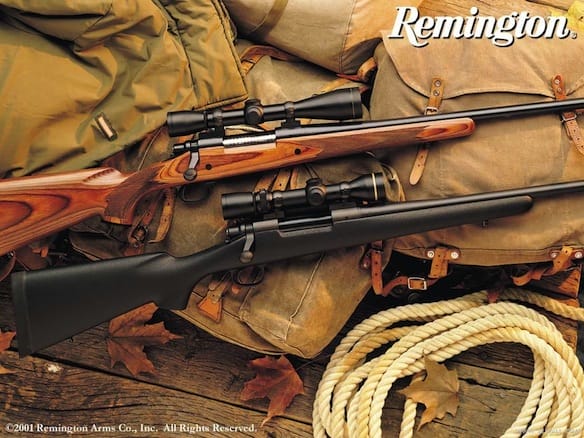
Kiss Kiss Bang Bang: How to Buy a Rifle
by Valerie Farabee
As a Renaissance man or woman your expertise spans a number of different areas; you are equally comfortable riding a horse, knitting a sweater, practicing geometry or building a house. As a well-rounded person, it only makes sense to learn or improve upon new skills, and riflery is an engaging sport with a long history behind it that many jacks-(and jills-) of-all-trades should have in their DIY arsenals. The very first thing you should do if you are a new to gun ownership is to go talk to experts at your local shooting range.
What Makes a Rifle a Rifle
A rifle is a gun designed to shoot from shoulder height that features grooves called ‘rifles’ in the barrel designed to make your projectile of choice spin around to more accurately hit your target. The rifles in the barrel dramatically increase the range of the shot, as well. The term is frequently and incorrectly applied to long-arms that do not have the characteristic rifling in the barrel, so make sure your salesperson knows you are specifically asking for a rifle, not simply a gun with a long barrel. Unlike an air rifle, this type of rifle uses a burning propellant like gunpowder instead of compressed air to fire the projectile/bullet.
Hunting and Biathlons
“Guns aren’t toys! They’re for family protection, hunting dangerous or delicious animals, and keeping the King of England out of your face!”
– Krusty the Klown
Whether it’s for protection, hunting, or defense against tyrants, the intended use of your rifle will impact the kind of rifle you buy. If you are an athlete participating in a biathlon, your needs will be different from a hunter shooting game. Rifles are not usually recommended as personal defense weapons because they are too powerful for the close range in which most attacks happen, so unless you live way out in the country, a rifle is way too much power for personal defense needs.
Get in on the Action
One important thing to look for when you buy a rifle is smooth, tight action. ‘Action’ refers to the mechanism that ejects the spent cartridge and moves a fresh cartridge into the chamber, and is an important part of the firearm’s inherent accuracy. A rifle with poor, gritty action is one that is not well-finished internally. It will not be as accurate as one where the parts move smoothly together, and accuracy is important to consider when hunting game or shooting targets. The type of action you choose for your rifle, e.g. bolt action, lever action, or pump action, is a personal preference. Go to your local gun range and try the many different types of action out there!
Chamber of Cartridge
Make sure to buy a rifle that is chambered with a cartridge you can handle, i.e. one that doesn’t pack so much power you injure yourself through the recoil! A cartridge is the case that holds primer, gunpowder, and a bullet at tip. Bullet manufactures classify cartridges by caliber – the diameter of the bullet – and weight, which is measured in grains. So for small game, use small caliber bullets like a .17 or the very common .22 caliber. For larger game you’ll need bigger bullets with more charge, and are likely to go for between .24 and 48 calibers. Find the balance between your shooting needs – small game or a bullseye target (or an overreaching King of England) – and the power you can physically handle, and you’re on the right path!
How Does it Feel?
Whether hunting deer or practicing marksmanship for a sporting event, if a rifle doesn’t feel right in your hands, you should try a different gun. Check the weight and length of the rifle until you find one that suits your needs. It would be hard to hit a bullseye target with an unwieldy, hard to hold gun!
The metal on rifles is usually carbon or stainless steel. Carbon steel is a little cheaper, but is also prone to rusting. Stainless steel costs more but is rust resistant. Take good care of your rifle and rusting will never be a problem!
Choose a rifle with a stock that feels comfortable in your hands. They come in a variety of materials, each which has a unique feel and weight to it. Some have a unique cost, as well, so do your research before buying!
Cost of Ownership
A single shot .22 can be found on the market for $100, and is a great standard rifle to have around for home protection. A good quality hunting rifle with a scope and ammo package deal is about $600 and worth every penny! Rifles hold their resale value and can make an excellent investment, many times rifles become heirlooms and are handed down from generation to generation. On the high end of the spectrum, advanced hunting and sniper rifles will run into the thousands of dollars. If you’re buying one of these, you’ve been hunting for awhile now and know what you’re doing. If that doesn’t describe you, rethink your purchase and buy a rifle that reflects your skill and interest level.
Remember to do your research, and never be afraid to ask questions! Talk to other rifle owners and listen to their preferences, the information from experienced gun owners will help you along the way.
Always practice gun safety! Have fun with your new rifle!



